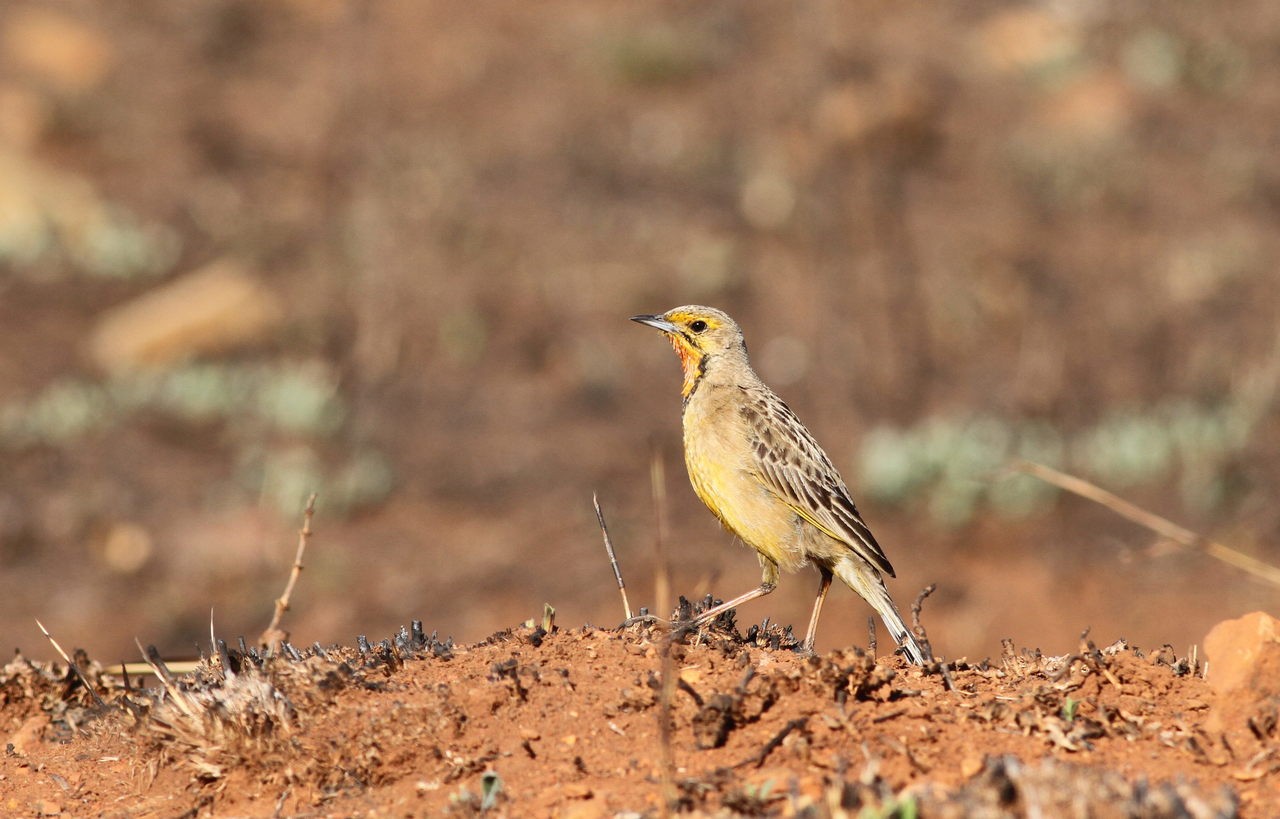Cape Longclaw
A species of Longclaws Scientific name : Macronyx capensis Genus : Longclaws
Cape Longclaw, A species of Longclaws
Botanical name: Macronyx capensis
Genus: Longclaws
Content
Description General Info
Description
The Cape longclaw is a 19–20 cm long. The adult male has a grey head with a buff supercilium and a streaked blackish back. It has a bright orange gorget, black breast band and otherwise yellow underparts. The female is duller, having a yellow throat and much weaker breast band. The juvenile has a dirty yellow throat, indistinct breast band, and yellowish white underparts. The Cape longclaw is usually found in pairs throughout the year. It feeds on the ground on insects and some seeds. The song is a musical cheewit cheewit, the contact call is tsweet, and there is also a mewling alarm call. Typically not found in larger groups than two, a breeding pair or more often singly. Another behavioural characteristic is the tendency of birds to stand on top of stones, anthills or large grass clumps. While doing so birds stand upright with their breast extended. This species has a striking resemblance to the unrelated icterid meadowlarks, grassland birds of the Americas. This is presumably due to convergent evolution. 
Size
21 cm
Nest Placement
Ground
Feeding Habits
Cape Longclaw primarily consumes a variety of insects such as grasshoppers, beetles, and stink-bugs, as well as grass seeds and termites. It forages on the ground, scratching open termite tunnels and catching insects in flight. Cape Longclaw may follow ploughs and associate with livestock to find food.
Habitat
The cape Longclaw primarily occupies open landscapes in cooler, drier climates, residing in short grasslands and often near wetlands, such as vleis and dams. It adapts to varied open terrains including pastures, cultivated fields, and sparsely vegetated coastal areas. Post-fire grounds are also favored, especially outside breeding seasons. Habitats are preferred with little tree and bush encroachment.
Dite type
Insectivorous
General Info
Feeding Habits
Bird food type
Species Status
Not globally threatened.
Scientific Classification
Phylum
Chordates Class
Birds Order
Perching birds Family
Wagtails Genus
Longclaws Species
Cape Longclaw 